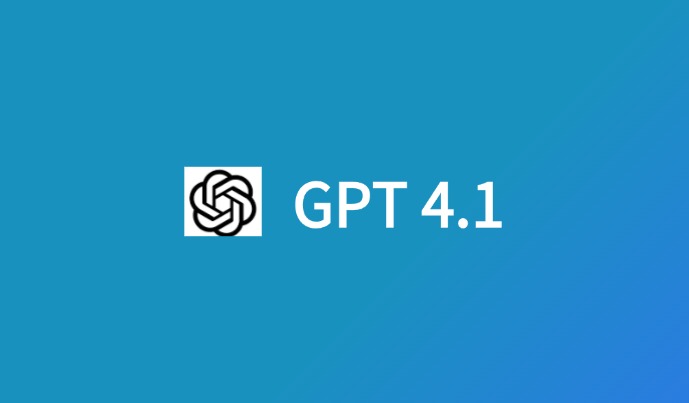In 2025, artificial intelligence continues to transform how we interact with digital content. One of the most exciting innovations is the AI-powered image summarizer — a tool that condenses images into useful, concise descriptions in seconds. From enhancing digital marketing strategies to optimizing data analytics, AI image summarization is revolutionizing industries. But with so many tools available, which ones stand out?
In this article, we will explore the top 5 AI image summarization tools in 2025. Whether you’re looking for a solution for your personal projects or enterprise-level applications, this list offers something for everyone.
What is AI Image Summarization?
AI image summarization is the process of using machine learning models and algorithms to identify the main elements within an image and present them as a concise summary. These summaries can range from object recognition to textual analysis, making them highly beneficial for industries like e-commerce, healthcare, and content creation.
Top 5 AI Image Summarizers for 2025
1. Google Vision AI
Google Vision AI is an industry leader, providing some of the most accurate image recognition capabilities. Whether you’re analyzing images for objects, faces, or text, this tool uses Google’s cutting-edge machine learning models to extract useful insights.
Key Features:
- Advanced object and face recognition
- Text detection from images (OCR)
- Integration with Google Cloud services for scalability
Pros:
- Highly reliable and fast
- Supports various types of analysis (objects, text, etc.)
- Scalable for businesses of all sizes
Cons:
- Requires Google Cloud services for full functionality
- Pricing can be a bit steep for smaller businesses
2. Clarifai
Clarifai is another strong contender in the AI image summarizer space. Known for its versatility and ease of use, it offers customizable models for a range of image summarization tasks. Clarifai is ideal for businesses needing precise image analysis.
Key Features:
- Customizable AI models for specific industries
- Image and video analysis
- Fast image processing for real-time insights
Pros:
- Excellent for specialized use cases
- User-friendly interface
- Free trial available
Cons:
- Paid plans may be expensive for startups
- Limited features on the free version
3. Amazon Rekognition
Amazon Rekognition offers top-tier AI-powered image and video analysis tools. From detecting objects to recognizing faces, Amazon’s platform is known for its reliability and integration with AWS, making it perfect for enterprise solutions.
Key Features:
- Facial recognition and analysis
- Object and activity detection
- Real-time analysis for quick insights
Pros:
- Strong integration with AWS ecosystem
- Highly scalable and secure
- Flexible pricing based on usage
Cons:
- Privacy concerns with facial recognition features
- Pricing model can be complex for newcomers
4. DeepAI
DeepAI is a great option for small businesses or developers who want an affordable and open-source solution. It offers free access to its image summarization tools and can be customized for specific applications.
Key Features:
- Open-source tool
- Customizable AI models for niche use cases
- Fast processing speeds
Pros:
- Completely free access
- Customizable to specific needs
- Great for developers with coding experience
Cons:
- Basic features may not meet the needs of larger businesses
- Requires technical knowledge to fully utilize
5. iWeaver
iWeaver is an emerging AI tool that combines simplicity with powerful summarization capabilities. It is perfect for users who need quick summaries without extensive technical know-how. Its speed and user-friendly interface make it stand out.
Key Features:
- Automatic image summarization
- Easy integration with web applications
- Real-time processing for instant results
Pros:
- Free plan available for casual users
- No technical setup required
- Ideal for users looking for quick, efficient results
Cons:
- Limited advanced features in the free version
- Basic functionality may not be suitable for all use cases
Comparison Table: AI Image Summarizers of 2025
| Tool | Key Features | Pricing | Pros | Cons |
|---|---|---|---|---|
| Google Vision AI | Object & text recognition | Pay-per-use | Reliable, scalable, integrated | Requires Google Cloud services |
| Clarifai | Customizable models | From $29/month | User-friendly, fast processing | Expensive for small businesses |
| Amazon Rekognition | Facial & activity detection | Pay-per-use | Strong AWS integration, secure | Complex pricing, privacy concerns |
| DeepAI | Open-source, customizable | Free – $5/month | Free, customizable, fast | Limited features for large enterprises |
| iWeaver | Easy-to-use summarization | Free – $10/month | Fast, simple, real-time | Limited advanced features |
Frequently Asked Questions (FAQs)
- What is an image summarizer? An image summarizer is an AI tool that processes images to extract and condense key information, such as objects, text, or themes, into a brief description.
- How accurate are these AI image summarizers? The accuracy depends on the quality of the AI model and the tool’s ability to process different types of images. Leading tools like Google Vision AI and Amazon Rekognition are known for their high accuracy.
- Are these tools easy to integrate with my existing workflow? Many AI image summarizers, such as Google Vision AI and Clarifai, offer APIs that make it easy to integrate with your existing software. Some tools like iWeaver are designed for simplicity, requiring no technical expertise.
- Can I use these tools for free? Several tools, such as DeepAI and iWeaver, offer free versions, though they may come with limitations. Paid versions generally offer more features and higher usage limits.
- How do I choose the best AI image summarizer? Consider factors such as the specific features you need (e.g., text detection, object recognition), the ease of use, pricing, and the scalability of the tool. If you’re a small business, tools like DeepAI or iWeaver might be ideal; for larger enterprises, Google Vision AI or Amazon Rekognition may be more suitable.
- How does AI image summarization help my business? AI image summarization can streamline content analysis, improve user experience, and speed up workflows in industries such as e-commerce, healthcare, and media.
Final Thoughts and How to Stand Out in 2025
AI image summarizers are revolutionizing the way we interact with digital content. By automating the process of identifying and summarizing key elements in images, these tools save time and provide insights that would otherwise require manual effort. Whether you’re a content creator, marketer, or data analyst, incorporating AI image summarizers into your workflow can dramatically enhance productivity and accuracy. The benefits of these tools are clear — faster image processing, more efficient content management, and the ability to quickly extract actionable insights from visual data.
However, standing out in 2025 requires more than just adopting AI image summarization tools. It’s crucial to choose a tool that aligns with your specific needs and goals. For instance, if you’re running an e-commerce platform, you may want a tool that not only summarizes product images but also provides detailed object recognition for inventory management. For media and content creators, a tool that can identify themes, faces, and text in photos may be a game-changer for social media campaigns or editorial work.
Furthermore, as these technologies evolve, it’s essential to stay ahead of the curve by continuously exploring new AI advancements. Tools that offer customization options, easy integration, and scalability will likely become even more valuable as businesses increasingly rely on AI for image summarization.
In summary, AI image summarizers are more than just a trend — they’re becoming integral to how businesses handle visual data. By selecting the right tool for your needs, staying adaptable, and leveraging the power of AI, you can stay competitive in 2025 and beyond.



